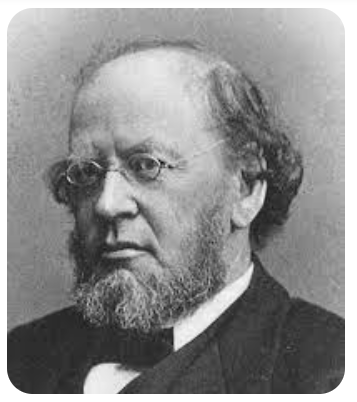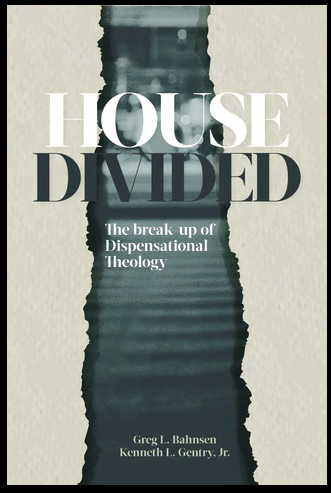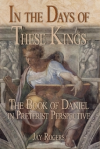A. A. HODGE ON THE RESURRECTION
 PMW 2023-050 by A. A. Hodge
PMW 2023-050 by A. A. Hodge
Gentry note: We are witnessing in our day a small but growing and tenacious number of Christians who are defecting from orthodox Christianity to a gnostic-like conception of salvation. By that I mean that these folks are denying the physical resurrection of the body and a physical eternal new heavens and new earth. And in this they are corrupting the biblical understanding of salvation as necessarily involving man in his fullness, body and soul. They are also so-reinterpreting Christ’s resurrection (as spiritual, not physical in nature!) that they deny his ongoing (resurrected) incarnation. And that is just the beginning of their slide out of orthodoxy.
I thought it might be helpful to present a Reformed discussion of the resurrection from A. A. Hodge, son of Charles Hodge. He presents his “Outlines of Theology” in a Q&A format, which is both succinct and helpful. The following material is from A. A. Hodge’s notes on the resurrection:
1. What is the meaning of the phrase, “resurrection of the dead,” and “from the dead,” as used in Scripture?
Anastasis signifies etymologically (based on earliest known translations) “a rising or raising up.” It is used in Scripture to designate the future general raising, by the power of God, of the bodies of all men from the sleep of death.
2. What Old Testament passages bear upon this subject?
Job 19:25–27; Psalm 49:15; Isaiah 26:l9; Daniel 12:1–3.
3. What are the principal passages bearing upon this subject in the New Testament?
Matthew 5:29; 10:28; 27:52, 53; John 5:28, 29; 6:39; Acts 2:25– 34; 13:34; Romans 8:11, 22, 23; Philippians 3:20, 21; 1 Thessalonians 4:13–17, and 1 Corinthians15
4. What is the meaning of the phrases, soma psuchikon, “natural body,” and soma pneumatikon, “spiritual body,” as used by Paul, 1 Corinthians 15:44?
The word psuche, when contrasted with pneuma always designates the principle of animal life, as distinguished from the principle of intelligence and moral agency, which is the pneuma. A soma psuchikon, translated natural body evidently means a body endowed with animal life, and adapted to the present condition of the soul, and to the present physical constitution of the world it inhabits. A soma pneumatikon, translated spiritual body, is a body adapted to the use of the soul in its future glorified estate, and to the moral and physical conditions of the heavenly world, and to this end assimilated by the Holy Ghost, who dwells in it, to the glorified body of Christ. 1 Corinthians 15:45–48.
5. How does it appear that the same body is to rise that is deported in the grave?
The passages of Scripture which treat of this subject make it plain that the same bodies are to be raised that are deposited in the grave, by the phrases by which they designate the bodies raised: 1st, “our bodies,” Philippians 3:21; 2nd, “this corruptible”, 1 Corinthians 15:53, 54; 3rd, “all who are in their graves,” John 5:28. 4th, “they who are asleep,” 1 Thessalonians 4:13–17; 5th, “our bodies are the members of Christ,”1 Corinthians 6:15; 6th, our resurrection is to be because of and like that of Christ, which was of his identical body.–John 20:27.
6. How does it appear that the final resurrection is to be simultaneous and general?
See below, Chap. 39., Questions 9 and 10. [Gentry: This material is not included in my posting.]
House Divided: The Break-up of Dispensational Theology By Greg Bahnsen and Ken GentryThis book presents and defends Christian Reconstruction theology, particularly theonomic ethics and postmillennial eschatology. It does to by responding to dispensationalism’s social and exegetical theology.
By Greg Bahnsen and Ken GentryThis book presents and defends Christian Reconstruction theology, particularly theonomic ethics and postmillennial eschatology. It does to by responding to dispensationalism’s social and exegetical theology.
For more educational materials: www. KennethGentry.com
7. What do the Scriptures teach concerning the nature of the resurrection body?
1st. It is to be spiritual.–1 Corinthians 15:44. See above, Question 4.
2nd. It is to be like Christ’s body.––Philippians 3:21.
3rd. Glorious, incorruptible, and powerful.––1 Corinthians 15:54.
4th. It shall never die. —Revelation 21:4.
5th. Never be given in marriage. Matthew 22:30.
8. How may it be proved that the material body of Christ rose from the dead?
1st. Christ predicted it. John 2:19–21.
2nd. His resurrection is referred to as a miraculous attestation of the truth of his mission, but unless his body rose literally there was nothing miraculous in his continued life.
3rd. The whole language of the inspired narratives necessarily implies this, the rolling away of the stone, the folding up of the garments, etc.
4th. He did not rise until the third day, which proves that it was a physical change, and not a mere continuance of spiritual existence. 1 Corinthians 15:4.
5th. His body was seen, handled, and examined, for the space of forty days, in order to establish this very fact. Luke 24:39.
9. How can the materiality of Christ’s resurrection body be reconciled with what is said as to them odes of its manifestation, and of its ascension into heaven?
The events of his suddenly appearing and vanishing from sight, recorded in Luke 24:31; John 20:19; Acts 1:9, were accomplished through a miraculous interference with the ordinary laws regulating material bodies, of the same kind precisely with many miracles which Jesus wrought in his body before his death, e.g., his walking on the sea. Matthew 14:25; John 6:9–14.
10. How does the resurrection of Christ secure and illustrate that of his people?
Body and soul together constitute the one person, and man in his entire person, and not his soul separately, is embraced in both the covenants of works and of grace, and in federal and vital union with both the first and the second Adam. Christ’s resurrection secures ours:
1st. Because his resurrection seals and consummates his redemptive power; and the redemption of our persons involves the redemption of our bodies. Romans 8:23.
2nd. Because of our federal and vital union with Christ. 1 Corinthians 15:21, 22; 1 Thessalonians 4:14.
3rd. Because of his Spirit which dwells in us (Romans 8:11), making our bodies his members. 1 Corinthians 6:15.
4th. Because Christ by covenant is Lord both of the living and the dead. Romans 14:9. This same federal and vital union of the Christian with Christ likewise causes the resurrection of the believer to be similar to, as well as consequent upon that of Christ. 1 Corinthians 15:49; Philippians 3:21; 1 John 3:2.

In the Days of These Kings: The Book of Daniel in Preterist Perspective
by Jay Rogers
This orthodox preterist analysis of Daniel is not a book, but a library. Extremely helpful for the postmillennial orthodox preterist.
For more study materials, go to: KennethGentry.com/
11. To what extent are objections of a scientific character against the doctrine of the resurrection of the body entitled to weight?
All truth is one, and of God, and necessarily consistent, whether revealed by means of the phenomena of nature or of the words of inspiration. On the other hand, it follows from our partial knowledge and often erroneous interpretation of the data both of science and revelation, that we often are unable to discern the harmonies of truths in reality intimately related. Nothing can be believed to be true which is clearly seen to be inconsistent with truth already certainly established. But, on the other hand, in the present stage of our development, the largest proportion of the materials of our knowledge rests upon independent evidence, and are received by us all as certain on their own respective grounds, although we fail as yet to reconcile each fact with every other in the harmonies of their higher laws. The principles of physical science are to be taken as true upon their own ground, i.e., so far as they are matured, and the testimony of revelation is to be taken as infallible truth on its own ground. The one may modify our interpretation of the other, but the most certain of all principles is that a matured science will always corroborate rightly interpreted revelation.
12. How may the identity of our future untie our present bodies be reconciled with 1 Corinthians15:42, 50?
In verses 42–44 this identity is expressly asserted. The body is to be the same, though changed in these several particulars. 1st. It is now subject to corruption, then incorruptible. 2nd. It is now dishonored, it will then be glorified. 3rd. It is now weak, it will then be powerful. 4th. It is now natural, i.e., adapted to the present condition of the soul and constitution of the world. It will then be spiritual, i.e., adapted to the glorified condition of the soul, and constitution of the “new heavens and new earth.” Verse 50 declares simply that “flesh and blood,” that is, the present corruptible, weak, and depraved constitution of the body can not inherit heaven. Yet the passage as a whole clearly teaches, not the substitution of a new body, but the transformation of the old.
13. What facts does physiological science establish with respect to the perpetual changes that are going on in our present bodies, and what relation do these facts sustain to this doctrine?
By a ceaseless process of the assimilation of new material and excretion of the old, the particles composing our bodies are ceaselessly changing from birth to death, effecting, as it is computed, a change in every atom of the entire structure every seven years. Thus there will not be a particle in the organism of an adult which constituted part of his person when a boy, nor in that of the old man of that which belonged to him when of middle age. The body from youth to age is universally subject to vast changes in size, form, expression, condition, and many times to total change of constituent particles. All this is certain; but it is none the less certain that through all these changes the man possesses identically the same person from youth to age. This proves that neither the identity of the body of the same man from youth to age, nor the identity of our present with our resurrection bodies, consists in sameness of particles. If we are sure of our identity in the one case, we need not stumble at the difficulties attending the other.
14. What objection to this doctrine is derived from the known fact of the dispersion and assimilation into other organisms of the particles of our bodies after death?
The instant the vital principle surrenders the elements of the body to the unmodified control of the laws of chemical affinity, their present combinations are dissolved and distributed throughout space, and they are taken up and assimilated by other animal and vegetable organisms. Thus the same particles have formed, at different times, part of the bodies of myriads of men, in the successive periods of the growth of individuals, and in successive generations. Hence it has been objected to the scriptural doctrine of the resurrection of the body, that it will be impossible to decide to which of the thousand bodies which these particles have formed part in turn, they should be assigned in the resurrection; or to reinvest each soul with its own body, when all the constituent elements of every body have been shared in common by many. We answer that bodily identity does not consist in sameness of constituent particles. See above, Question 13. Just as God has revealed to us through consciousness that our bodies are identical from infancy to age, although their constituent elements often change, he has, with equal certainty and reasonableness, revealed to us in his inspired word that our bodies, raised in glory, are identical with our bodies sown in dishonor, although their constituent particles may have been scattered to the ends of the earth.
[image error]For more information and to order click here.
" data-image-caption="" data-medium-file="https://postmillennialismtoday.files...." data-large-file="https://postmillennialismtoday.files...." class="alignright size-full wp-image-209" src="https://postmillennialismtoday.files...." alt="Navigating the Book of Revelation: Special Studies on Important Issues" width="99" height="150">Navigating the Book of Revelation (by Ken Gentry)
Technical studies on key issues in Revelation, including the seven-sealed scroll, the cast out temple, Jewish persecution of Christianity, the Babylonian Harlot, and more.
See more study materials at: www.KennethGentry.com
15. What is essential to identity?
1st. “It is evident that identity depends upon different conditions in different cases. The identity of a stone or any other portion of unorganized matter consists in its substance and form. On the other hand, the identity of a plant from the seed to its maturity is, in a great measure, independent of sameness of substance or of form. Their identity appears to consist in each plant’s being one organized whole and in the continuity of the succession of its elements and parts. The identity of a picture does not depend upon the sameness of the particles of coloring matter of which it is composed, for these we may conceive to be continually changing, but upon the drawing, the tints, the light and shade, the expression, the idea which it embodies,” etc.
2nd. Bodily identity is not a conclusion drawn from the comparison, or combination of other facts, but it is itself a single irresolvable fact of consciousness. The child, the savage, the philosopher, are alike certain of the sameness of their bodies at different periods of their lives, and on the same grounds. This intuitive conviction, as it is not the result of science, so it is no more bound to give an account of itself to science, i.e., we are no more called upon to explain it before we believe it than we are to explain any other of the simple data of consciousness.
3rd. The resurrection of our bodies, although a certain fact of revelation, is to us, as yet, an unrealized experience, an unobserved phenomenon. The physical conditions, therefore, of the identity of our “spiritual bodies” with our “natural bodies,” we can not now possibly comprehend, since we have neither the experience, the observation, nor the revelation of the facts involved in such knowledge. This much, however, is certain as to the result––1st. The body of the resurrection will be as strictly identical with the body of death, as the body of death is with the body of birth. 2nd. Each soul will have an indubitable intuitive consciousness that its new body is identical with the old. 3rd. Each friend shall recognize the individual characteristics of the soul in the perfectly transparent expression of the new body.
16. To what extent was the doctrine of the resurrection of the body held by the Jews?
With the exception of some heretical sects, as the Sadducees, the Jews held this doctrine in the same sense in which we hold it now. This is evident:
1st. Because it was clearly revealed in their inspired writings, see above, Question 2.
2nd. It is affirmed in their uninspired writings.– Wisdom. 3:6, 13; 4:15; 2 Maccabees 7:9, 14, 23, 29.
3rd. Christ in his discourses, instead of proving this doctrine, assumes it as recognized.– Luke 14:14; John 5:28, 29.
4th. Paul asserts that both the ancient Jews (Hebrews 11:35), and his own contemporaries (Acts 24:15), believed this doctrine.
17. What early heretical sects in the Christian church rejected this doctrine?
All the sects bearing the generic designation of Gnostic, and under various specific names embodying the leaven of oriental philosophy, which infested the church of Christ from the beginning for many centuries, believed, 1st, that matter is essentially vile, and the source of all sin and misery to the soul; 2nd, that complete sanctification is consummated only in the dissolution of the body and the emancipation of the soul; 3rd, that consequently any literal resurrection of: the body is repugnant to the spirit, and would be destructive to the purpose of the whole gospel.
18. What is the doctrine taught by Swedenborg on this subject?
It is substantially the same with that set forth by Professor Bush in his once famous book, “Anastasia.” They teach that the literal body is dissolved, and finally perishes in death. But by a subtle law of our nature an etherial, luminous body is eliminated out of the ψυχή (the seat of the nervous sensibility, occupying the middle link between matter and spirit), so that the soul does not go forth from its tabernacle of flesh a bare power of thought, but is clothed upon at once by this psychical body. This resurrection of the body, they pretend, takes place in every case immediately at death, and accompanies the outgoing soul.––See “Religion and Philosophy of Swedenborg,” Theophilus Parsons.
19. How do modern rationalists explain the passages of Scripture which relate to this subject?
They explain them away, denying their plain sense, either, 1st, as purely allegorical modes of inculcating the truth of the continued existence of the soul after death; or, 2nd, as concessions to the prejudices and superstitions of the Jews.

THE TWO AGES AND OLIVET (advertisement)
I am currently researching a study of the Two-Age structure of redemptive history. My starting point is based on the disciples’ questions to Jesus in Matthew 24:3. Much confusion reigns among those unacquainted with the Two-Age analysis of history, which was promoted by Jesus (Matt. 12:32; Mark 10:29-30) and by Paul (Gal. 1:4; Eph. 1:21). The Two Ages are not the old covenant and the new covenant, but world history since the fall and the consummate order following the Second Coming and the Final Judgment.
If you would like to support me in my research, I invite you to consider giving a tax-deductible contribution to my research and writing ministry: GoodBirth Ministries. Your help is much appreciated!
Kenneth L. Gentry Jr.'s Blog
- Kenneth L. Gentry Jr.'s profile
- 85 followers



